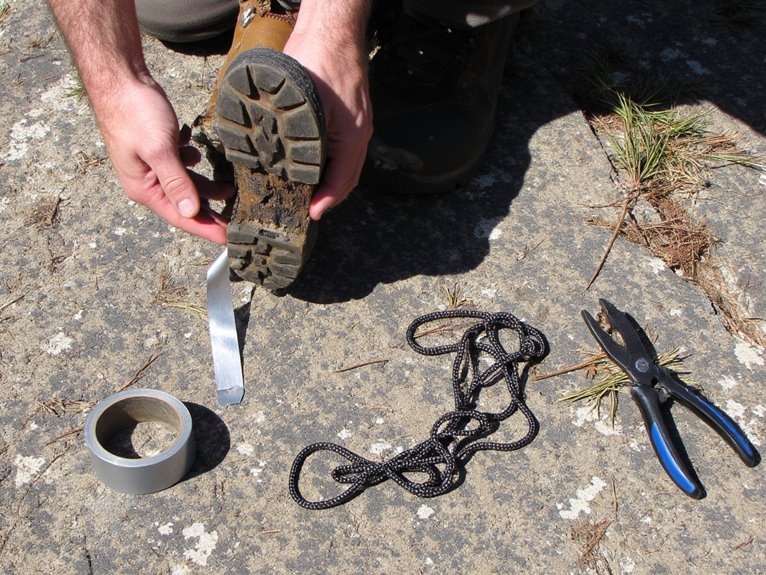How Long Is a Whitewater Kayak?
A whitewater kayak's length typically ranges from 5.5 to 14 feet, depending on the type of paddling, paddler size, and desired performance characteristics. Shorter kayaks, around 5.5-7 feet, ideal for playboating and freestyle, offer agility and maneuverability. Medium kayaks, 7-9 feet, balance responsiveness and tracking ability, perfect for river running. Longer kayaks, 12-14 feet, prioritize speed and stability, suited for cruising on calm waters. As you consider your own needs and paddling style, the perfect kayak length awaits – and there's more to discover on this journey.
We are supported by our audience. When you purchase through links on our site, we may earn an affiliate commission, at no extra cost for you. Learn more. Last update on 17th January 2026 / Images from Amazon Product Advertising API.
Types of Whitewater Kayaks
Three primary types of whitewater kayaks cater to varying skill levels and paddling styles: creek boats, river runners, and playboats.
Creek boats are designed for tackling technical rapids and steep rivers, with a focus on maneuverability and stability.
River runners, on the other hand, prioritize speed and efficiency, making them ideal for longer, more relaxed paddles.
Playboats, the shortest and most agile of the three, are built for freestyle and surfing in whitewater features.
Each type of kayak is engineered to meet the unique demands of its respective paddling discipline, allowing kayakers to choose the perfect craft for their preferred style of whitewater adventure.
Length and Performance Correlation
As kayakers navigate the diverse world of whitewater kayaks, another key consideration emerges: the correlation between a kayak's length and its performance on the water.
Generally, longer kayaks offer more speed and stability, making them ideal for river running and creek boating.
Conversely, shorter kayaks are more agile and maneuverable, suiting them to playboating and freestyle applications.
A longer kayak's increased surface area allows it to track better, reducing the effort required to maintain direction.
However, this comes at the cost of responsiveness, making tight turns and quick changes in direction more challenging.
Understanding the interplay between length and performance enables kayakers to select the ideal kayak for their paddling style and preferred disciplines.
Short Kayaks for Playboating
In the domain of playboating, short kayaks reign supreme, their compact design and lightweight construction allowing for unparalleled agility and precision in the midst of turbulent whitewater.
These kayaks, typically ranging from 5.5 to 7 feet in length, are built for freestyle maneuverability and tricks.
Their shorter length enables paddlers to spin, flip, and carve through waves with ease, making them ideal for playboating enthusiasts.
With a shorter kayak, paddlers can exploit even the smallest of waves, exploiting every eddy and hole to perform aerial stunts and tricks.
For those seeking an adrenaline rush in the rapids, short kayaks are the ultimate playboating companions.
Medium Kayaks for River Running
When tackling river running with medium kayaks, paddlers must consider the nuances of river flow speeds, as even slight variations can notably impact navigation.
A medium kayak's length can be a significant advantage in these scenarios, providing a balance between maneuverability and stability.
As we delve into the world of medium kayaks for river running, we'll examine the key factors that enable paddlers to navigate tight turns and conquer the thrilling challenges of whitewater kayaking.
River Flow Speeds Matter
How swiftly the river's currents flow can make all the difference between a leisurely paddle and a heart-pounding, adrenaline-fueled ride.
River flow speeds play a vital role in determining the ideal kayak length for river running. Faster currents demand shorter, more maneuverable kayaks that can quickly respond to changing water conditions.
Slower currents, on the other hand, allow for longer kayaks that can track straight and maintain speed.
Understanding the flow speeds of the river is essential in choosing the right kayak length for an exhilarating yet controlled ride.
A kayak that's too long may struggle to navigate tight turns, while one that's too short may lose speed on slower stretches.
Kayak Length Advantages
Medium-length kayaks, typically between 7 and 9 feet in length, offer the ideal blend of maneuverability and tracking ability, making them the perfect choice for river running.
This length allows paddlers to pilot through rapids with ease, while maintaining stability and control.
The shorter length enables quick turns and fast responses, ideal for traversing through tight spaces and turbulent waters.
At the same time, the moderate length provides enough stability to track straight and maintain speed, making it easier to paddle through calm sections of the river.
This balance of agility and stability makes medium-length kayaks the go-to choice for river runners seeking an exhilarating and challenging experience.
In the dynamic environment of river running, the ability to navigate tight turns with precision and control is paramount, and medium-length kayaks prove to be ideal for this task.
These kayaks, typically between 7.5 and 8.5 feet in length, offer the perfect blend of maneuverability and stability.
Their shorter length allows for quicker turns and better responsiveness, while their medium size provides the necessary stability to maintain speed and control through tight turns.
This balance enables paddlers to carve through rapids with confidence, making medium-length kayaks the go-to choice for river runners seeking to tackle technical whitewater courses with precision and finesse.
Long Kayaks for Cruising
Long kayaks, typically measuring between 12 and 14 feet in length, are ideally suited for cruising on calm waters, offering a stable and efficient ride for paddlers seeking a relaxing, scenic experience.
These longer kayaks provide excellent tracking, allowing paddlers to cover long distances with minimal effort.
Their sleek designs and rounded hulls enable them to glide effortlessly through the water, making them perfect for exploring lakes, rivers, and coastal areas.
Whether you're a beginner or an experienced paddler, long kayaks for cruising provide a comfortable and enjoyable ride, allowing you to soak up the surroundings and enjoy the serenity of being on the water.
Kayak Length and Paddler Size
When it comes to whitewater kayaking, finding the perfect kayak length is crucial, as it directly impacts a paddler's performance and control.
The ideal kayak size is closely tied to the paddler's height, with taller paddlers requiring longer kayaks to maintain stability and maneuverability.
Paddler Height Range
As paddlers of varying heights prepare to tackle the rapids, selecting a kayak that matches their stature is essential for peak performance and control.
A kayak that is too small or too large can substantially impact a paddler's ability to maneuver and respond to the water.
Generally, paddlers under 5'4' require a kayak between 7'6' and 8'2' in length, while those between 5'4' and 5'8' benefit from kayaks between 8'2' and 8'6' in length.
Taller paddlers, above 5'8', often require kayaks ranging from 8'6' to 9'2' in length.
Ideal Kayak Size
Optimizing kayak length in relation to paddler size is essential, as a well-matched kayak enables precise control, swift maneuverability, and maximum thrill in whitewater kayaking.
A kayak that's too short may compromise stability, while one that's too long can hinder agility.
As a general guideline, paddlers under 5'6' typically suit kayaks between 7'6' and 8'2' in length.
Those between 5'7' and 6'1' often prefer kayaks ranging from 8'3' to 8'8'.
Taller paddlers, above 6'2', often opt for kayaks exceeding 8'9' in length.
Remember, these are general guidelines, and individual preferences may vary.
Ultimately, finding the ideal kayak size is vital for an exhilarating whitewater kayaking experience.
Custom Kayak Length Considerations
A whitewater kayak's length has a profound impact on its performance, responsiveness, and overall handling, making it a crucial consideration for paddlers seeking a custom design that meets their unique needs and preferences.
When designing a custom kayak, paddlers must consider factors such as their skill level, preferred water type, and personal comfort.
A longer kayak may offer more stability and speed, while a shorter kayak provides greater maneuverability and playfulness.
Additionally, paddlers should consider their body type and size, as well as the type of whitewater they plan to paddle.
Choosing the Right Kayak Length
When deciding on the ideal kayak length, paddlers must strike a balance between stability, maneuverability, and responsiveness, taking into account their specific needs and paddling style. A longer kayak provides more stability, while a shorter kayak is more agile. The right length also depends on the type of whitewater paddling, such as creek boating or playboating.
Paddler's skill level: Beginners may prefer a shorter kayak for easier maneuverability, while experienced paddlers may opt for a longer kayak for more speed and stability.
Water type: Creek boaters may prefer a shorter kayak for tighter turns, while playboaters may prefer a longer kayak for more speed and air.
Paddler's size and strength: Smaller paddlers may prefer a shorter kayak for easier handling, while larger paddlers may prefer a longer kayak for more power.
Personal preference: Ultimately, the right kayak length is a matter of personal preference, so it's essential to demo different lengths before making a purchase.


